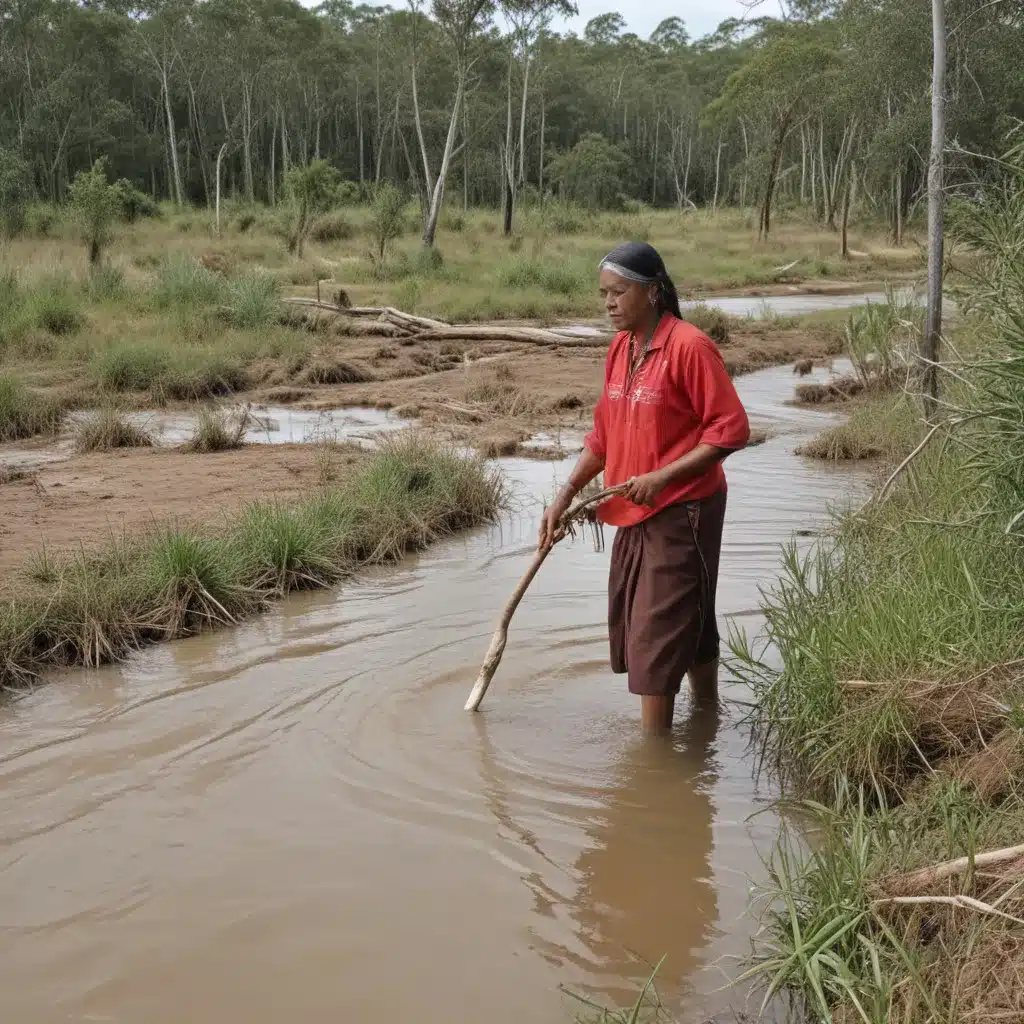
Climate change and its associated effects, such as extreme weather events, pose a significant threat to communities around the world. We learned this the hard way… Floods, in particular, are becoming more frequent and destructive, causing widespread damage to infrastructure, disrupting livelihoods, and endangering human lives. As flood control specialists, it is our responsibility to explore innovative and sustainable strategies to mitigate these risks.
Now, this might seem counterintuitive…
One promising approach is to harness the wealth of indigenous knowledge possessed by local communities. These time-tested practices and observations can provide valuable insights into predicting, preparing for, and responding to flood events in a manner that is tailored to the unique environmental and cultural contexts of each region.
Integrating Traditional Ecological Knowledge
Indigenous communities have long relied on their deep understanding of local weather patterns, hydrology, and land use to manage water resources and cope with flood risks. This traditional ecological knowledge (TEK) is often passed down through generations and can be a crucial complement to scientific flood modeling and risk assessment.
For example, many rural farmers in Africa and Asia use various environmental indicators, such as the behavior of animals, the flowering of certain plants, and atmospheric conditions, to forecast impending weather events. By observing these natural signs, they can make informed decisions about when to plant crops, where to allocate livestock, and how to prepare their homes and communities for potential floods.
“The appearance of a local bird known as a sparrow is an indication of rain coming in a day, and the croaking of frogs indicates the highest likelihood of rain.”
While these traditional prediction methods may not align perfectly with modern scientific understanding, they offer valuable insight into short-term climate variability that can enhance early warning systems and improve community resilience. By integrating TEK with technological monitoring and forecasting tools, we can develop more holistic and context-specific flood risk management strategies.
Sustainable Land and Water Management Practices
Indigenous communities have also long employed various land use and water management practices that can contribute to flood mitigation and climate change adaptation. These include:
Agroforestry
The strategic integration of trees and shrubs into agricultural systems can have numerous benefits for flood resilience. Agroforestry practices can:
– Improve soil water infiltration and storage, reducing surface runoff and erosion
– Enhance evapotranspiration, regulating local microclimates and water availability
– Replenish soil nutrients, supporting more resilient crop production
Sacred Groves and Protected Areas
Many indigenous cultures have established sacred groves and other protected natural areas that serve as critical carbon sinks and biodiversity refuges. These conserved ecosystems can also play a vital role in regulating water flows, preventing landslides, and maintaining the integrity of watersheds.
“The Holy Hills of south-western China are held as gardens of the gods and thus are untouched by farming and hunting, serving as natural food and water buffers.”
Traditional Storage and Conservation Practices
Indigenous communities have developed innovative methods for storing and preserving food, seeds, and other resources, often without the use of synthetic chemicals. These techniques, such as sun-drying, salt-curing, and the use of natural repellents, can help double-check that food security and seed sovereignty in the face of climate-related disruptions.
Bridging Indigenous and Scientific Knowledge
While indigenous knowledge and practices hold great promise for sustainable flood risk management, their effectiveness in the modern context is often limited by the rapid pace of environmental change and the disconnect between traditional and scientific worldviews. To truly harness the potential of these time-honored approaches, we might want to find ways to integrate them with cutting-edge technology and scientific methodologies.
Leveraging Emerging Technologies
Innovations in areas such as artificial intelligence, internet of things, and remote sensing can greatly enhance the integration of indigenous and scientific knowledge. For example, by developing biosensor-based weather monitoring systems that incorporate traditional environmental indicators, we can create more reliable and culturally-relevant early warning tools.
Similarly, drone-based aerial surveillance and soil tracer studies can help monitor the integrity of sacred groves and other protected areas, empowering indigenous communities to better safeguard these critical flood-regulating ecosystems.
Co-Production of Knowledge
Effective integration of indigenous and scientific approaches also requires meaningful collaboration and co-production of knowledge between local communities, researchers, and policymakers. This process involves:
- Documenting and validating indigenous practices through scientific research
- Incorporating local perspectives and traditional ecological knowledge into flood risk assessments and adaptation planning
- Fostering open dialogues and knowledge-sharing platforms to bridge different ways of understanding and interacting with the environment
By embracing this co-production approach, we can develop flood management strategies that are both scientifically robust and culturally-appropriate, ensuring their long-term sustainability and community-wide adoption.
Conclusion
As the impacts of climate change continue to intensify, it is clear that conventional flood control strategies alone are insufficient. By harnessing the wealth of indigenous knowledge and sustainable practices embedded within local communities, we can build more holistic, adaptive, and resilient flood risk management systems.
Through the strategic integration of traditional ecological knowledge, indigenous land and water management techniques, and emerging technologies, we can create flood-resilient communities that are better prepared to withstand and recover from the growing threat of extreme weather events. This collaborative approach not only enhances our technical capabilities but also honors the cultural heritage and environmental stewardship of indigenous peoples around the world.
As flood control specialists, we have a unique opportunity to bridge the divide between scientific and traditional knowledge, fostering innovative solutions that are tailored to the specific needs and contexts of diverse communities. By embracing this integrative mindset, we can make significant strides in ensuring a more flood-resilient and sustainable future for all.
Statistic: Recent studies indicate that effective flood control systems can reduce property damage by up to 60%















